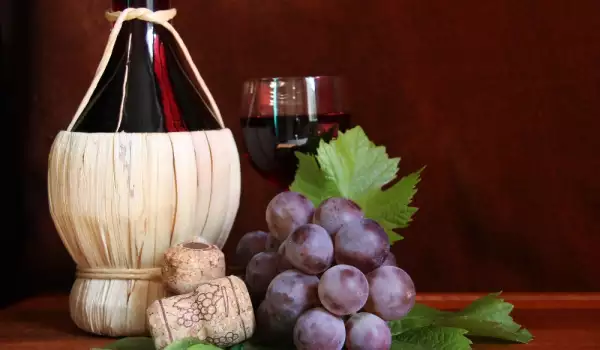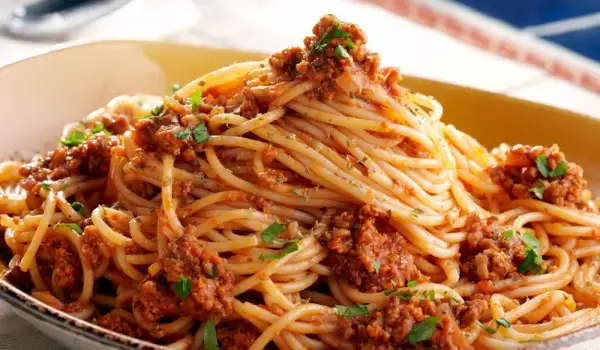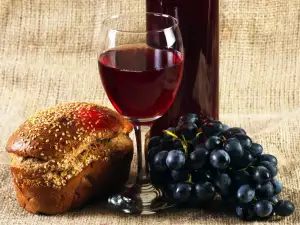Chianti is a red, dry wine, produced in the legendary Tuscany region in Italy. Chianti is one of the oldest wines, it's been in production for at least 700 years. The name encompasses a group of red wines with over 7000 different varieties.
The Sangiovese variety dominates in Chianti and is complemented by the color saturated Canaiolo and other varieties. Each bottle of Chianti has a label with a red rooster, symbolizing the authenticity of the wine.
Chianti is among the most Italian of wines and behind its fame stands its unbelievable taste, the years of experience in its production and the fact that it's produced in one of the most scenic regions in all of Italy.
The 7 zones that can produce Chianti were determined back in 1932 by a special committee. These are: Chianti Classico, Chianti Montalbano, Chianti Rùfina, while the other 4 are the hills of the breathtaking Tuscan cities of Siena, Pisa, Arezzo and Florence.
In 1967, they created the DOCG classification (Denominazione di Origine Controllata e Garantita) and Chianti became part of it with its varieties Colli Fiorentini, Classico, Colli Senesi, Colline Pisane, Colli Aretini, Rufina, Montalbano and Montespertoli. Each one of these wines is made in one of the above mentioned regions and is regulated in different ways. Chianti Classico is the strictest regulated out of all of them.
History of Chianti

Without a shadow of a doubt, Chianti is one of the most valued and popular French wines worldwide but its history is unfamiliar even to Italian citizens. The first time Chianti was ever mentioned was way back in the year 1300 but at that time it was described as a white wine of not-so-high quality. About 30 years later, they began writing about Chianti as a red and quite prized wine.
It wasn't until the year 1800 that baron Bettino Ricasoli described in detail the proportions of the various grape varieties used to make the superb wine.
The basis of Chianti is the Sangiovese grape, with small amounts of Malvasia negra and Canaiolo added in. These 2 added varieties soften the taste characteristics of the otherwise more specific Sangiovese and improve the color of the wine.
In his recipe, baron Bettino Ricasoli added that if one would like a lighter wine, they must add a mixture of Trebbiano Toscano and Malvasia Bianca wines. By adding these white wines, which was done in the past, Chianti would turn into an inferior quality pink wine.
The tradition of blending small proportions of white varieties dates back to the 19th century, with the originator considered to be the baron himself. The aim was to soften the otherwise too aggressive tannins.
Because of its fair price however, Chianti remained much sought after... but not among wine connoisseurs. Subsequently, they added Merlot, Syrah and Cabernet Sauvignon to Sangiovese to improve the taste qualities of the wine. The result of all these improvements over the years is one and the same - even today the majority of Italians do not know exactly what Chianti is.
Characteristics of Chianti
According to the current production requirements for Chianti, this magnificent red wine is made from a minimum of 80% Sangiovese, while the other 20% are a choice mix of other grape varieties. This means that if you were to buy several bottles of Chianti of different brands you would be able to taste that many different types of wine as well.

Chianti wines with a DOCG (controlled designation of origin guaranteed) must meet several main requirements. These are: an intense light tannin aftertaste; a bright ruby color; a delicate aroma with fresh nuances of violets.
The variety of Chianti wines really is tremendous and selecting one can get confusing. Wines labeled "Chianti" are plain table wines and aren't too particular on quality. They are suitable for quick consumption and are decently priced. The best Chianti wines are Chianti Classico and Chianti Rùfina. These are also the 2 subregions in Chianti from which the highest quality wine of this kind currently comes from.
Serving Chianti
According to sommeliers, the paramount qualities of a Chianti wine are best revealed when it is combined with foods with a higher acidity, as well as meat dishes with thick sauces.
Chianti can be drunk while it's young, as well as when it ages. Young Chianti goes perfectly with roasted meat, while a thicker and more complex aged Chianti is fantastic with game and cheeses.
Younger Chianti is good company for spaghetti Marinara or with another red sauce, chicken schnitzels, sandwiches with meat, pizza. Margherita pizza, sausages, cheeses such as parmesan and pecorino are appropriate. A Caesar salad served with a young Chianti is a true delight for the senses.
Aged Chianti can be combined with pasta primavera, grilled chicken, grilled eggplants, veal chops. Chianti Classico reveals much more elegant and complex nuances of dried herbs and leather. It is suitable with risotto with mushrooms or chicken, garnished with a light cream sauce and a garnish of steamed broccoli.

Chianti Classico showcases its fine taste with a plain dish such as roasted steaks with savory and mashed potatoes. Grilled fish, pasta bolognese are also suitable.
Chianti Classico Riserva is one of the top representatives of this wine and Italian wines as a whole. It's no wonder then that it goes well with classic Italian food. Fettuccine with tomato sauce, juicy beef steaks, ravioli with mushrooms, roasted meats, dishes with wild boar, lasagna, roasted lamb become even more irresistible with a glass of Chianti Riserva.









